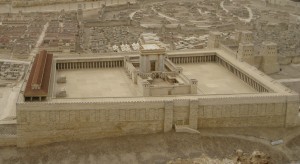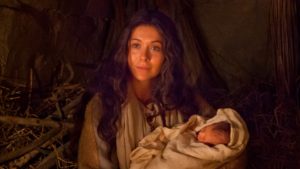by John W. Welch
Little is known about the Wise Men. The Gospel of Matthew says they came from somewhere east of Jerusalem. The early Christian writer Justin Martyr said that they were Jewish men who came from Arabia, southeast of Judea. They may have been among the many Jewish people who were looking for the fulfillment of Israelite prophecies about the coming of the Messiah, such as Daniel’s 490-year prophecy.
Jewish traditions also spoke of temple priests who had gone into exile in Arabia awaiting a chance to return. The Jerusalem Talmud, Tacanit 4.5, mentions priests who had fled from Jerusalem and settled in Arabia around 625 B.C. Other priests may have been expelled by King Herod when he built his own magnificent temple in Jerusalem.
So, it is possible, as Margaret Barker first pointed out in her book Christmas: The Original Story (London: Continuum, 2008), that the Magi came from these priestly groups or from other groups of watchful priests awaiting the coming of the Lord of Holiness. If so, their three gifts could not have been more perfectly suitable, given by priests to their new High Priest.

Temple of Herod, model, in Jerusalem
The gift of gold would have sparkled like the gold that was required in the Temple. According to scripture, the inner doors, altar, table for the bread of the Presence, lamp stands, bowls, censers, utensils and implements of the Temple and the paneling on the walls of the Holy of Holies were to be made of pure gold or were gold-plated (1 Kings 7:48-50). Gold was incorruptible and did not rust. It was thought to have absorbed and embodied the radiance of the sun. Shiny gold objects reflected radiantly the heavenly glory of the sun.
Frankincense, a resin gathered from trees in south Arabia, provided fragrance in the Temple. The Holiness Code required incense to accompany every sacrifice “offered by fire to the Lord” (Leviticus 24:7). Its sweet, billowing smoke was thought to carry prayers up to heaven. It was burned in the Temple to invite and invoke the presence of the Lord.
Isaiah 60:6 prophesied that camels would bring gold and incense from southwestern Arabia, but what about myrrh? Myrrh is another resin, drawn from the life-sustaining sap of another desert tree. It was a key ingredient in preparing the sacred oil that imparted holiness. The recipe for that anointing oil is found in Exodus 30:23-24. It calls for 500 shekel-weight of myrrh, 250 of cinnamon, 250 of calamus, and 500 of cassia to be mixed in a hin (about one gallon) of olive oil. That anointing oil was uniquely used to sanctify the temple, the ark of the covenant, and the temple vessels, menorahs, and altars. Most of all, it was used to anoint and consecrate the High Priest, and it could not be used outside the Temple (Exodus 30:26-33).
The holy myrrh had disappeared from the Holy of Holies and been hidden away in the time of Josiah according to the Babylonian Talmud, Horayoth 12a. It represented Wisdom (Ben Sira 24:15), and because of its preservative qualities it was used in preparing the dead for burial.
But more than that, this myrrh oil was known as the “dew of resurrection,” and it had anointed the royal high priests after the order of Melchizedek and transformed them into sons of God. One early Christian, Pope Leo the Great, said: “He offers myrrh who believes that God’s only begotten son united to himself man’s true nature.” That uniting of divine and human was the mystery of the myrrh oil in the Holy of Holies. Old traditions also spoke about Adam receiving gold, frankincense, and myrrh from three angelic messengers, so that he could offer proper sacrifices when cast out of Eden.
By giving Jesus these three essential, holy, and precious gifts, the Wise Men prepared Jesus, “the last Adam” (1 Cor. 15:45), to offer the ultimate sacrifice as the new and everlasting High Priest, bringing eternal light, life, and God’s presence from heaven above to earth below.



